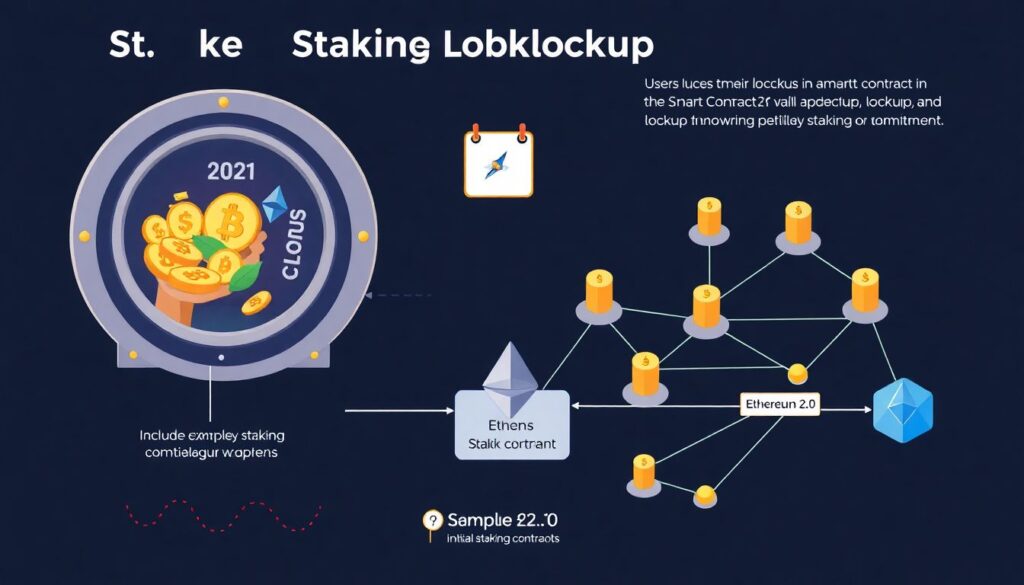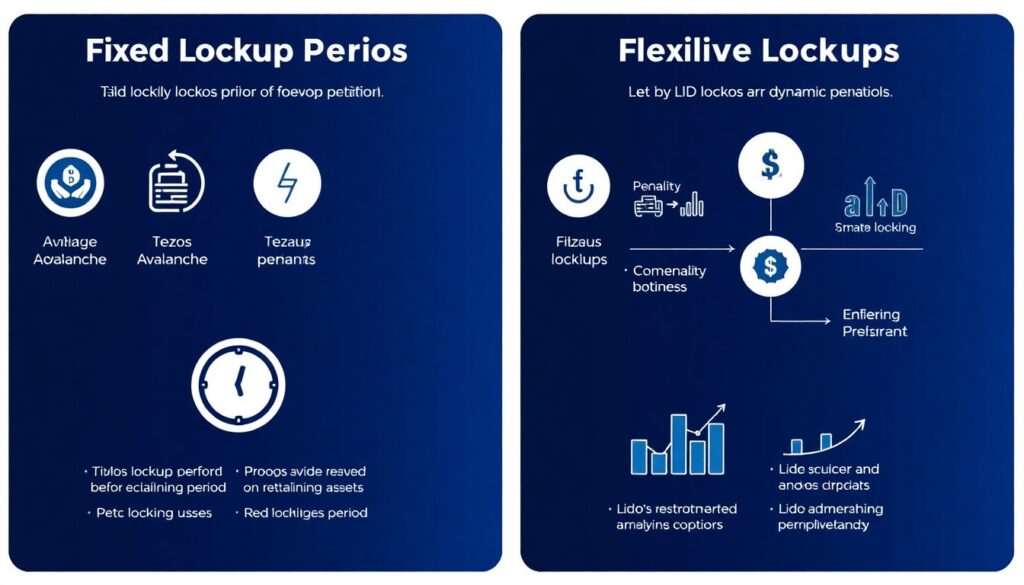Understanding Staking Lockups and Early Unstaking Penalties
What Are Staking Lockups?

Staking lockups are predefined periods during which users agree to hold their crypto assets in a staking contract without the ability to withdraw them. This mechanism secures the network by ensuring validator commitment and discouraging opportunistic behavior. For example, Ethereum 2.0 initially required stakers to lock up ETH indefinitely until the network transitioned from proof-of-work to proof-of-stake. As of 2024, the average lockup period across major protocols ranges from 7 to 365 days, depending on design and governance parameters.
Penalties for Early Unstaking
Early unstaking penalties are financial disincentives imposed on users who withdraw their staked tokens before the lockup period ends. These penalties vary by blockchain. In Cosmos, for instance, unstaking requires a 21-day unbonding period without explicit penalties, whereas in networks like Polkadot, early withdrawal can result in a direct loss of rewards or slashed collateral. The purpose is to maintain network consistency and punish sudden liquidity withdrawals, which could destabilize consensus or governance.
Different Approaches to Lockup Enforcement

Blockchain protocols have implemented varying mechanisms to address the challenges of lockups:
1. Fixed Lockup Periods – Common in Avalanche and Tezos, where users must wait for a predetermined time before reclaiming assets.
2. Flexible Lockups with Dynamic Penalties – Seen in protocols like Lido, which offers liquid staking but adjusts returns based on liquidity and network performance.
3. Validator-Dependent Exit Delays – For example, Ethereum 2.0 uses validator exit queues, where the withdrawal depends on validator churn, not a strict timeline.
4. Dual Token Systems – Projects like Rocket Pool use a secondary token (rETH) to provide liquidity while underlying ETH is locked.
5. Bonding Curves and Slashing Risks – Used in systems like Synthetix, where exiting early could result in slashing if performance targets are not met.
Each model balances network security and user convenience differently, with trade-offs in decentralization and liquidity.
Statistical Outlook and Market Trends
According to Messari’s 2024 staking trends report, over 63% of all PoS tokens are staked globally, reflecting a rising preference for passive income in crypto. However, 38% of stakers express concerns over illiquidity and lockup rigidity. The growing demand for liquid staking solutions (e.g., stETH, rETH) has led to a 3x increase in TVL (Total Value Locked) in such services since 2022. This indicates a clear market pivot towards flexibility without compromising yield potential.
Economic Implications for Users and Networks
Economically, lockups reduce token velocity, supporting price stability and long-term commitment. However, they also restrict capital movement, making staking less attractive for short-term investors. Early withdrawal penalties serve as compensation for the network’s potential risk exposure and lost consensus participation. For protocols, these mechanisms incentivize continuous validator engagement, which enhances security and trust in the system.
Yet, when penalties are too steep or lockups excessively long, user participation declines, reducing decentralization and increasing reliance on centralized staking providers. This creates systemic risks, such as potential governance capture or validator collusion.
Forecast: The Future of Lockups and Penalties
Looking ahead, staking designs are expected to become more flexible. New models like restaking (EigenLayer), delegated staking, and modular consensus layers aim to decouple security from capital constraints. By 2026, analysts predict that over 70% of staking will be routed through liquid staking protocols, with early exit options offered via secondary markets or derivatives.
Protocols will likely adopt dynamic penalty schemes based on market volatility or network congestion. This will encourage responsible behavior while avoiding the rigidity of current lockup models. Furthermore, improvements in cross-chain interoperability may allow staked assets to be used as collateral across ecosystems, enhancing capital efficiency.
Conclusion
Staking lockups and early exit penalties are essential tools for securing Proof-of-Stake networks, but their design must strike a balance between stability and flexibility. As user expectations evolve and market liquidity becomes a priority, protocols are innovating to offer hybrid solutions. To navigate this landscape effectively, investors must understand not only the yield potential but also the risk and liquidity profile of each staking model. The future lies in adaptable systems that protect network integrity without compromising user freedom.

